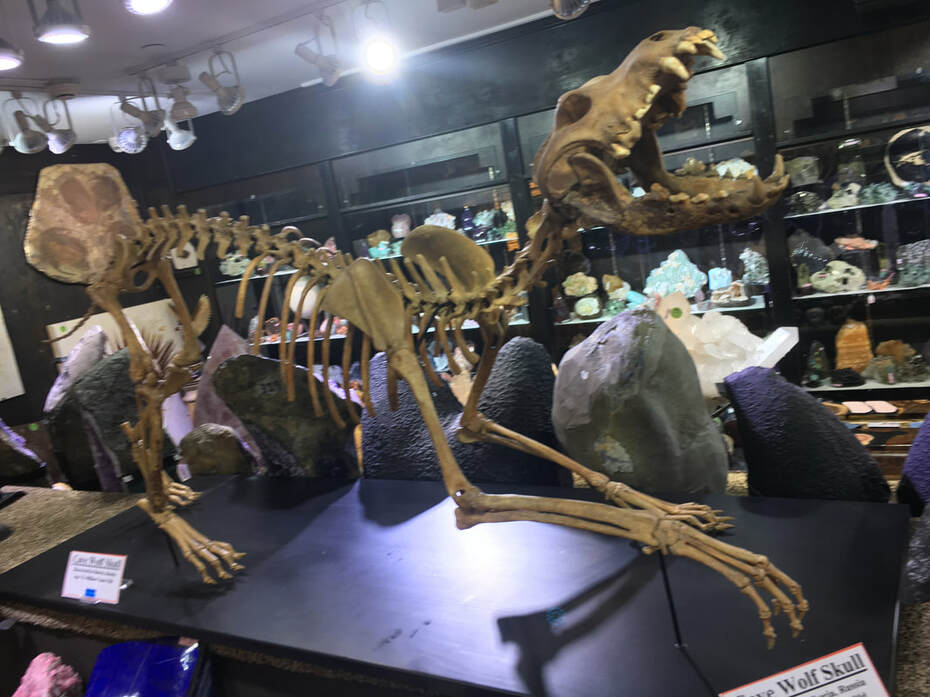Pirate Gold Coins: Treasures of the Jurassic - Cave Wolf Skeleton
The Cave Wolf (Canis lupus spelaeus) is an extinct type of wolf that lived during the Late Pleistocene Ice Age. It inhabited what is now modern-day western Europe. The Don wolf (C. l. brevis) from eastern Europe is regarded as a taxonomic synonym, which indicates that one subspecies once lived across Europe. The cave wolf was first described by Georg August Goldfuss in 1823 based on a wolf pup skull found in the Zoolithen Cave located at Gailenreuth, Bavaria, Germany. In the early to middle Late Pleistocene, these large wolves existed all over Europe. They have not been studied in any degree of depth, and their relationship to modern wolves has not been clarified using DNA. All of the top predators in Europe commenced going extinct with the loss of the pleistocene megafauna when conditions became colder during the peak of the Last Glacial Maximum around 23,000 years ago. The last cave wolves used the side branches of the main caves to protect their pups from the cold climate. During this time the cave wolf was replaced by a smaller wolf-type, which then disappeared along with the reindeer, to finally be replaced by the Holocene warm-period European wolf Canis lupus lupus. In 2009, a study of the fossil remains of Paleolithic dogs and Pleistocene wolves found that five wolf specimens from Trou Baileux, Belgium, Trou des Nutons, Belgium, Mezine, Ukraine, and Yakutia, Siberia had a greater snout width than recent wolves. A similar trend was discovered in the North American fossil East Beringian wolf. Diagram of a wolf skull with key features labelled Cave wolf populations are known from three caves separated by a few kilometers from each other that are located on the Franconia Karst along the Wiesent and Ahorn River vallies in the Upper Franconia region of the state of Bavaria, Germany. Sophie's Cave sits on the northwest slope of the Ailsbach Valley near Rabenstein Castle in the Ahorntal municipality. Große Teufels Cave (Big Devil's Cave) and the Zoolithen Cave are located nearby. They are also known from Hermann's Cave in the village of Rübeland near the town of Wernigerode, in the district of Harz, Saxony-Anhalt, Germany. Its bone proportions are close to those of the Canadian Arctic-boreal mountain-adapted timber wolf and a little larger than those of the modern European wolf. Some postcranial bones have similarly large proportions to those from the Sophie's and Große Teufels Caves, where the bone sizes are closer to those of Scandinavian Arctic and Canadian Columbian wolf subspecies than to those of the smaller European wolves. Bone sizes are one-eighth larger than European wolves, and this wolf was a specialized Late Pleistocene wolf ecomorph.- Wikipedia




















